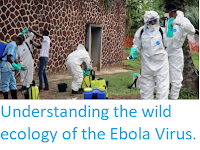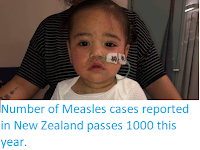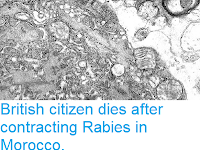A total of 22 people have died in Samoa in an out break of Measles, most of them children, with 1979 cases of the disease reported this year (2019), 153 cases and two fatalities reported since Friday 22 November. The high mortality rate is thought to have largely been driven by a poor inoculation rate, with a vaccination rate against the disease estimated to be as low as 28-40% by Unicef, an organisation which has sent 110 500 doses of vaccine to the country. The government of Samoa has now made vaccination against Measles compulsory, as well as closing schools and banning children under 17 from attending any public gathering. The country's Attorney General, Lemalu Hermann Retzlaff, has also warned people against discouraging vaccinations in any way, with press sources in the islands reporting unscrupulous businessmen peddling 'alternative' means of treating and preventing the disease. The nearby nations of Tonga and Fiji have declared states of emergency, although both countries have vaccination rates above 90% and are therefore thought to be at much lower risk from the disease. New Zealand has sent trained nurses, medicines and equipment to the islands.
Families queueing for vaccination outside a government health clinic in Apia, Samoa. AP.
Measles is a Viral Disease, that presents as a fever combined with a
cough and inflamed eyes, followed by the development of a rash first in
the mouth and then across the body. About 30% of cases go on to develop
complications, which can include diarrhoea, blindness, inflammation of
the brain and pneumonia, and the disease can be fatal. Measles is a
highly infectious airborne disease spread by coughing, with un-immunised
people living in close proximity to infected persons having an
approximately 90% chance of catching the Virus. The disease is easily
prevented by vaccination, but hard to treat once people are infected,
with small children, who are least likely to have been immunised,
particularly vulnerable. This makes it particularly important for health
workers to be alert for new cases once the disease becomes established
in an area, and ensure that all potential cases are screened for the
Virus promptly.
Thin-section transmission electron micrograph of a Measles Virus.
Measles is caused by a single-strand RNA Virus belonging to the genus Morbillivirus,
which also includes the Viruses that cause Canine Distemper and
Rinderpest, as well as a variety of other diseases infecting domestic
and wild Mammals. The genius Morbillivirus is in turn a
member of the Paramyxoviridae, a group of Viruses that infect a wide
range of Mammals, Birds, Reptiles and Fish, and includes the Virus that
causes Mumps in Humans.
See also...
Follow Sciency Thoughts on Facebook.








